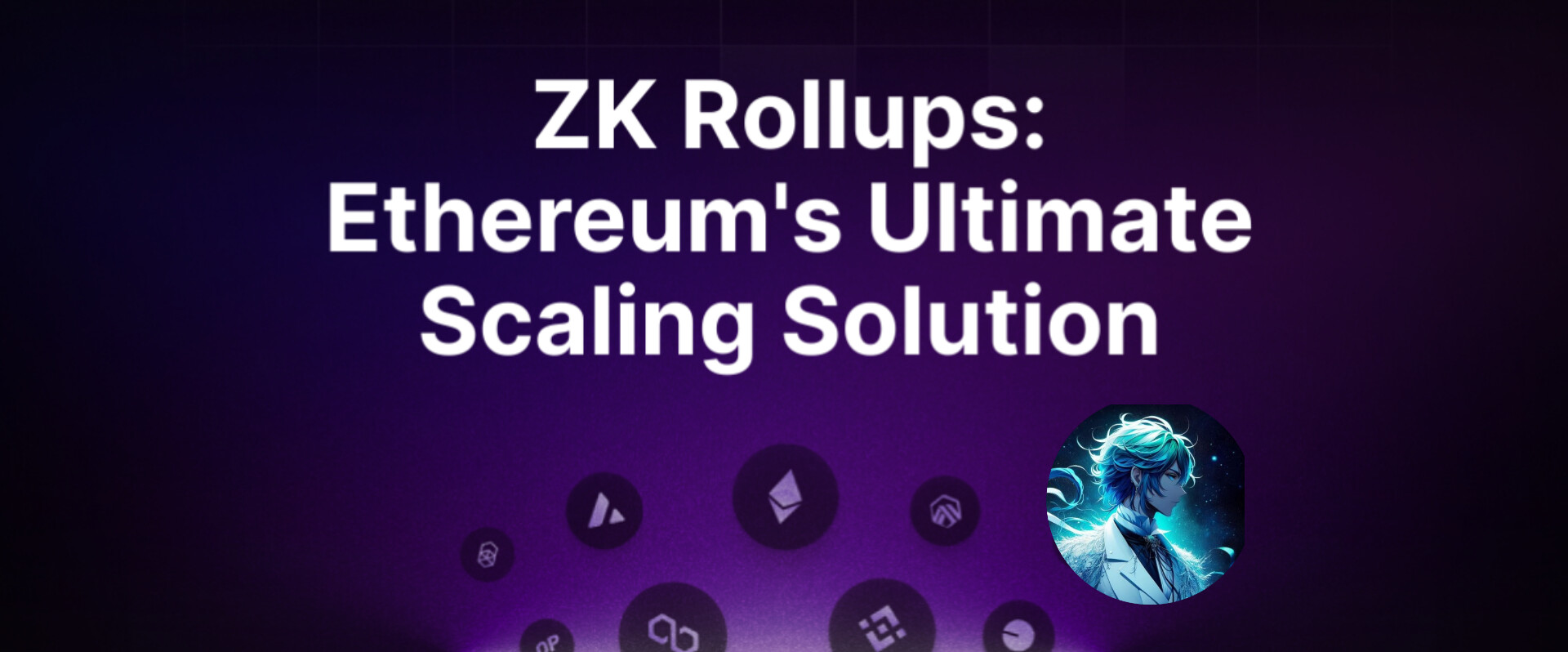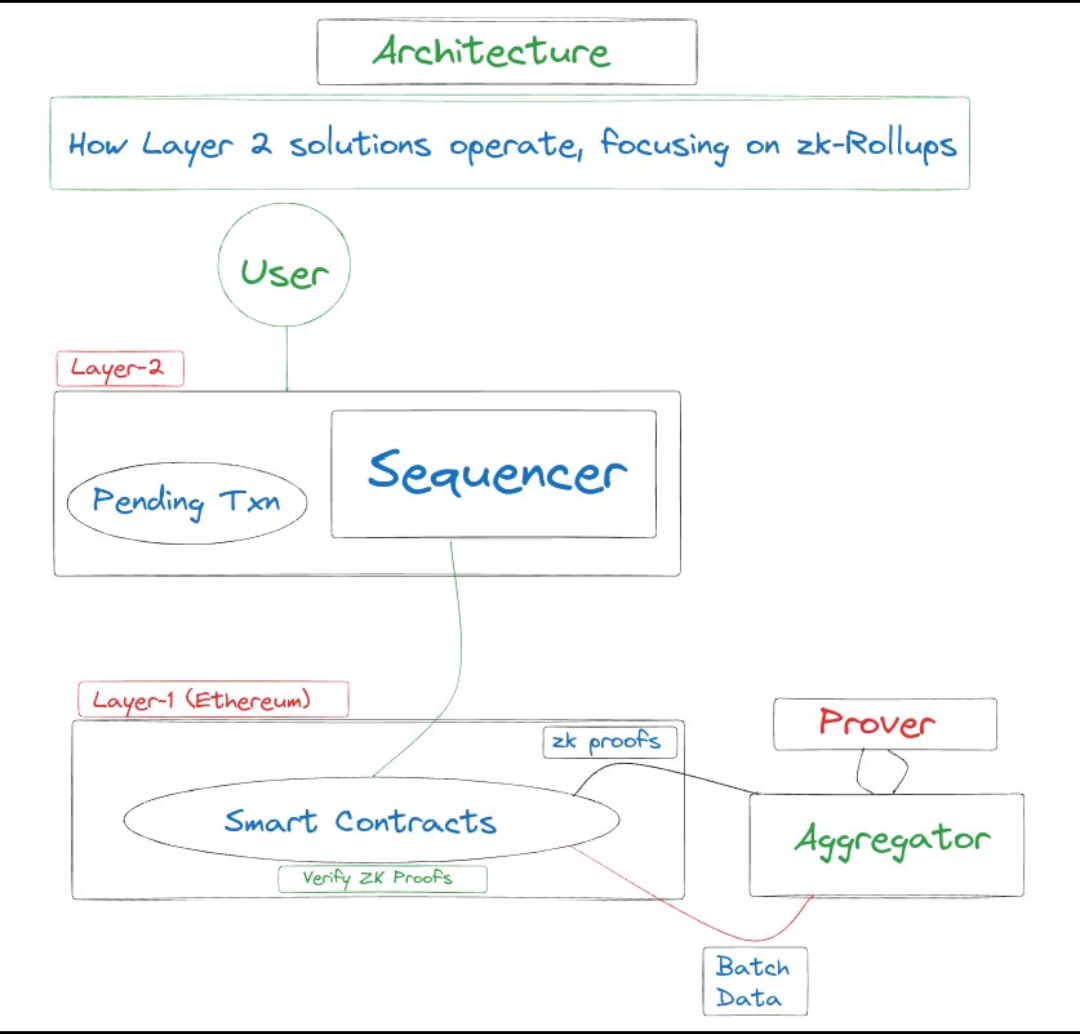🌐 How Layer 2 Chains/Solutions Operate: Exploring zk-Rollups in 8 Steps ⛓️🔍
 Adityaa kr
Adityaa krTable of contents
- 1) User Submits a Transaction 💳
- 2) Pending Transaction Pool 🥣
- 3) Sequencer Processes Transactions
- 4) Providing Information to Ethereum (Layer 1) ✍
- 5) Sending Transaction Data to Ethereum 💱
- 6) Storing Layer 2 Transaction Data 📊
- 7) Batch Data Aggregation 📈
- 8) Generating zk-Proofs 📖
- Final Step - Verification of zk-Proofs on Ethereum ✅


Layer 2 solutions, particularly zk-Rollups, offer a scalable and efficient way to manage blockchain transactions. Here’s a breakdown of how they work in eight steps:
1) User Submits a Transaction 💳
A user initiates a transaction on the Layer 2 network, which is designed to handle high volumes of transactions quickly and with lower fees compared to Layer 1 networks like Ethereum.
2) Pending Transaction Pool 🥣
Once submitted, the transaction enters a pool of pending transactions on the Layer 2 network. This pool is similar to the mempool on Ethereum, where transactions wait to be processed.
3) Sequencer Processes Transactions
A sequencer, which is a specialized entity responsible for managing the transaction flow on Layer 2, processes the transactions in the pending pool. The sequencer approves valid transactions, discards invalid ones, and batches the approved transactions together for efficiency.
4) Providing Information to Ethereum (Layer 1) ✍
The sequencer compiles the batched transactions and generates a state root. The state root is a cryptographic representation of the new state of the Layer 2 network after processing the batch of transactions. This is a crucial step for maintaining the integrity and consistency of the network.
5) Sending Transaction Data to Ethereum 💱
The sequencer sends the batched transactions and the new state root to Ethereum (Layer 1). This step ensures that the Layer 1 network is aware of the changes happening on Layer 2, maintaining a link between the two layers.
6) Storing Layer 2 Transaction Data 📊
Smart contracts on Ethereum store the transaction data and state roots. This stored data can be used to reconstruct the Layer 2 state if needed, providing a backup and ensuring transparency and reliability.
7) Batch Data Aggregation 📈
The aggregator aggregates the transaction data into batches. This aggregation optimizes processing and reduces costs by minimizing the number of interactions with the Layer 1 network.
8) Generating zk-Proofs 📖
A prover generates zero-knowledge (zk) proofs for the batched transactions. zk-Proofs are cryptographic proofs that ensure the validity of transactions without revealing the transaction details. This maintains privacy and security while verifying the transactions.

Final Step - Verification of zk-Proofs on Ethereum ✅
Smart contracts on Ethereum verify the zk-proofs. Once verified, the transactions in the batch are considered final and valid. This final step ensures that the transactions are secure and tamper-proof, leveraging the security of the Ethereum network.
Layer 2 solutions like zk-Rollups are revolutionizing the blockchain landscape by offering scalable, efficient, and secure ways to handle transactions.
By offloading much of the transaction processing to Layer 2 while maintaining the security of Layer 1, these solutions provide a robust foundation for the future of decentralized applications.
Subscribe to my newsletter
Read articles from Adityaa kr directly inside your inbox. Subscribe to the newsletter, and don't miss out.
Written by

Adityaa kr
Adityaa kr
Passionate about tech and driven by curiosity.